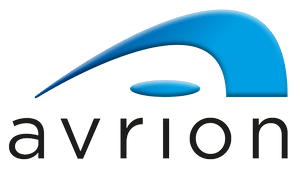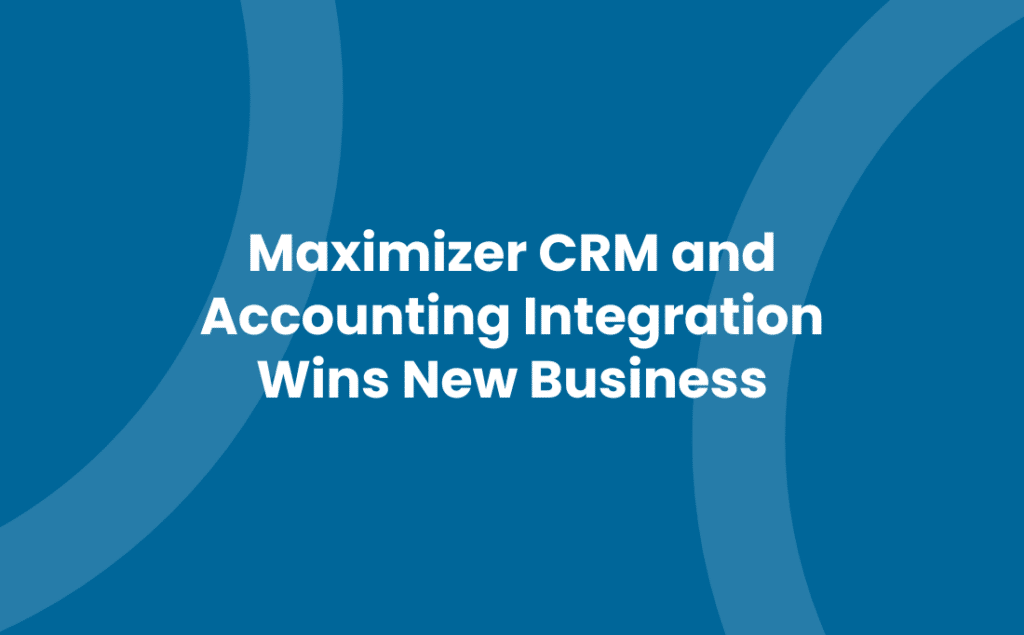As a leading Maximizer reseller and #1 Elite Maximizer Business partner in EMEA, Avrion is always investing time and effort into improving Maximizer CRM’s effectiveness and marketability. We are 100% focused on the needs of our clients. We want them to reap limitless benefits from one of the best CRM systems around. Making CRM work is a key priority – that’s why we want to introduce you to CRM and Accounting integration.
Maximizer CRM and Accounting integration
Over time, there has been a growing demand from our clients asking for their Accounting systems to be integrated with Maximizer. We quickly realised that what they really wanted was to be able to incorporate financial information from their Accounts system into their CRM. It was important to them to get sales, turnover and customer account information linked to CRM records. In response to this demand, we created two apps – connecting Sage 50/Sage 200 Accounting and QuickBooks Accounting to Maximizer CRM. There were two other factors – one technical, the other financial – that were been additional drivers for these integrations:
- Maximizer CRM has an apps directory platform, enabling us to write connectors and integrations and publish them across the entire global Maximizer user base.
- And, whilst there has always been the option of bespoke integration, the cost of such a solution for each customer has been prohibitive.
With these two connectors available to every Maximizer user, customers can now achieve their CRM and Accounting integration without the cost of a bespoke solution. Their only outlay is an annual subscription. However, at an affordable price, we can also offer an integration platform that provides some customisation, so that although the system is already mostly configured, it offers some scope for further tailoring the connector specific to individual customer needs.
So, how does the CRM and Accounting integration actually work?
The main function of the data connectors is to transfer customer information in the Accounting system, such as account summary, orders/estimates, invoices, and ledger activity transactions, into the corresponding records in CRM:
- An Account Ledger Summary provides an automatic daily data feed that populates the Maximizer User Defined Fields with information like current account balance, turnover year to date, last year’s turnover, etc. You can view the information either as fields, or as the record card in Maximizer, or you can customise or configure the CRM further to leverage that data.
- Dashboards enable you to look at your customers by the current balance owed to you, your top-spending customers by last year’s turnover, or to view notifications about customers on credit hold or stop.
The real potential comes from the merging of Accounting information with CRM profile information. The data link allows you, for example, to look at active customers by turnover and total sales. You can then categorise it by CRM fields, such as industry segment or turnover. You can also analyse your customers against spend and CRM profiles. From this raw data you can derive real value and turn it into more processes within your main business.
A new dimension in sales management
You can now see how this pairing of Maximizer and Sage/QuickBooks Accounting starts to shape up in terms of account management efficiency, and the positive knock-on effect on sales volume.
A great advantage of integrating CRM and Accounting is that you are able to look at totally accurate reporting of sales by salesperson – something that would not have been possible using just CRM. However, it is the availability of an additional Maximizer tab – a standard feature within CRM – that makes such accuracy possible. The tab displays the following information:
- Sales Orders (Sage) / Estimates (QuickBooks) – a dynamic view of sales orders/estimates held in your Accounting system relating to the customer record in Maximizer. Each order/estimate line shows the order number, date, net and gross value, status and dispatch status. You can expand an order to view the line items which show the product code, description, detailed description, quantity, unit, unit price and net value.
- Invoices – this does exactly the same as the Sales Orders/Estimates, but instead shows information such as the invoice number, invoice type (sales or credit), date, net and gross value, customer order number, department, and posting status. There’s no longer any need to log into your Accounting system to view customer invoices.
- Transactions – a log of all posted ledger transactions, such as invoices and credits, payment receipts, refunds, and journal adjustments. Each transaction displays the type, reference, date, details, net/tax/gross amounts, and whether the transaction is outstanding or paid. There’s no longer any need to ask your accounts department for this information.
- Dashboard – a graphical snapshot representation of Sales Orders/Estimates, Invoices and Credits, enabling you to sort data by financial year. A quick way of viewing customer performance month-by-month, year-on-year.
These tabs enable a much more efficient account management relationship. They can, for example, show the number of transactions between you and your customers while you are talking to them on the phone; or the customer might ask about the amount of their invoice for a product received two months earlier. You can now find the relevant transaction in Maximizer and answer the question immediately without having to reference elsewhere.
What other benefits are there of integrating CRM with my Accounting system?
Another key benefit of integrating your Accounting system with CRM is the unlocking of your Accounting data. This helps you to leverage the power of the CRM system for analysing and reporting on Accounts data from a sales and marketing perspective. For example, whilst an Accounts system will show you your turnover and profitability, it cannot analyse your Accounts data by customer type, sales department or industry, or flag something to do with a customer’s profile. But by bringing the Accounts data across into CRM, you can exploit the richness of CRM to give you that detailed level of scrutiny.
The most successful feature of integrated connectors is the simplicity of their function, delivery and robustness. They may not meet 100 percent of your needs, but neither do they carry the high costs of bespoke integrations.
A typical two-way integration involves substantial investment and support, but our Sage and QuickBooks financial connectors have much lower running costs – and you’re probably looking for excellent value from the information you hold and the systems you use, which is why these uncomplicated, fast, and reliable connectors may be an attractive option for your business.
Avrion has been able to deliver these connectors efficiently, securely and, above all, cost-effectively. And we strive to continue to do this.
Further information
To find out more about our Sage and QuickBooks Financials Connectors, visit our Avrion Apps page, or get connected straight away by visiting our Apps Store! If you have any questions, feel free to contact us.
- Tel: +44 (0)1992 661244
- Email: enquiries@avrion.co.uk
- Follow us on LinkedIn
- Subscribe to our YouTube channel
- Contact us here


